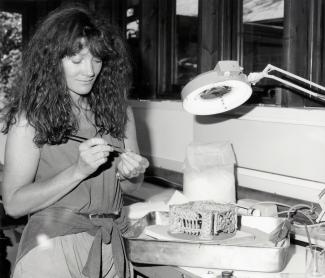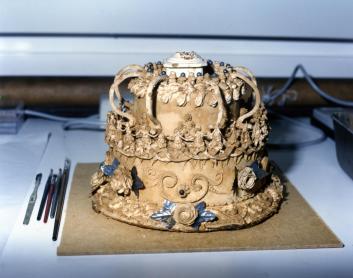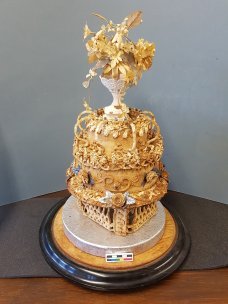
This ornate wedding cake was once displayed in the window of a family bakery C H Philpott in Potters Lane Basingstoke. It is believed to have been made in 1898 and was donated to the Museum Service in 1995 by the baker’s daughter Ruby Philpott.
Following conservation and part restoration in 1997 it was displayed in the Willis Museum’s ‘Victorian’ Sitting Room before being returned to the conservation team at Chilcomb for further conservation and monitoring following concerns from museum staff who had noticed a distinct colour change. The cake was collected, a delicate operation involving 2 conservators and a cautious driver and delivered back to Chilcomb in 2007.
It had been displayed in unfavourable environmental conditions leading to the cake heating and causing the sugars to seep through to the icing giving it a darker colour. Upon investigation using a syringe the cake was found to be very moist. A large crack in the icing, the result of wartime bombing vibration, was in a precarious state due to the weight of the icing pulling away from the cake itself.
The cake was stabilised using an acetone based consolidant injected into the cake. The flap of loose icing was then adhered and held in place until dry. It was then necessary to dry the cake out as much as possible using packets of silica gel placed under the dome. We then discussed alternative display methods to ensure the cake enjoyed a further 110 years of life.
The wedding cake was delivered back to the Museum in August 2008 and is now displayed with associated ephemera in a case opposite the room set. The case contains an environmental data logger of which temperature and relative humidity are downloaded regularly.
The gallery now has air conditioning which will greatly help the longevity of the cake and other objects on display.



